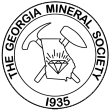GMS Field Trip
If you have any questions about field trips send email to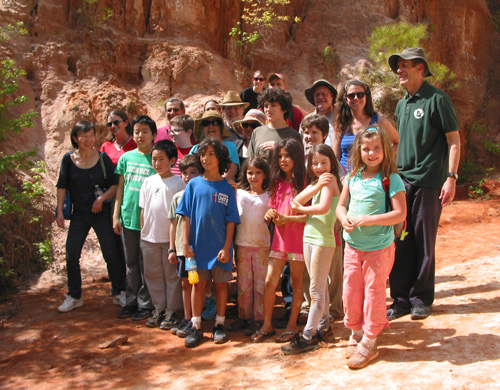
Some of the field trip participants stopped for a group photo with Dr. Witherspoon
GMS Field Trip
Geology Hikes in Georgia
Saturday, April 11, 2015
April’s multi-location field trip started at Flat Rock Park in Columbus, GA. Dr. Bill Witherspoon, co-author of Roadside Geology of Georgia, led us on a tour of the geology of the area. First, we were invited to play a game to help us distinguish between granite and gneiss. Then as we walked through the park he showed us a good example of a pegmatite. As we continued around the area, he explained the various geologic regions in Georgia. Our first morning walk was in the Piedmonts. There we stood atop a monadnock – an isolated rocky knob, hill, or mountain surrounded by mostly flat terrain. Juniors in the group were the first to answer Dr. Witherspoon’s question when he asked if we could think of another famous monadnock in Georgia – Stone Mountain.
At the second location we visited, we were standing in the Coastal Plain near the Fall Line. The geology there was drastically different. Before, we were surrounded by large structures of igneous and metamorphic rocks. Now we were in a lot of sediment including sand, clay, and kaolinite. Dr. Witherspoon showed us a cross section where we could see the cross bedding formed when water flowed there and deposited the sediment plus clay layers that were laid down too. We collected many different colors of sand as well as hollow iron formations filled with ochre and other iron oxides. The iron nodules are often called “Indian Paint Pots” because if you add water to the iron oxide it can be used as a pigment or even as paint.
We had a break for lunch, then reconvened at Providence Canyon State Park. Dr. Leslie Edwards, co-author of Natural Communities of Georgia, joined us to teach us about the diverse vegetation in the canyon. We hiked into the canyon and stopped at several spots along the way. Dr. Witherspoon showed us how different the clay looked above and below the K-T boundary (Cretaceous-Tertiary or Cretaceous-Paleogene boundary refers to geologic time associated with a mass extinction event. Older terminology is K-T and it is K instead of C because of German spelling).
Junior members enjoyed the shallow creek and blobs of clay that could be found there while older attendees enjoyed seeing the braided pattern the creek is cutting. One of the more curious things about Providence Canyon is how it formed. Though poor farming habits are generally blamed, it is also the unique geology of the area that contributed to the formation. After trees were cleared for farming, water was able to penetrate the clay layer of the land and the loose sediment below was easily weathered away. So what would normally take a geologically long time to happen took only a couple of hundred years.
Dr. Edwards also pointed out some curious vegetation in the canyon. First, she showed us some rare trillium plants. We were lucky that there was still at least one bloom still out. She explained there are 2 different varieties in the canyon, one that is called Trillium underwoodii and the other that is a little deceptive is called Trillium decipiens. The “underwoodii” trillium will smell kind of like sweaty socks and the other will smell like ripe bananas. A brave junior volunteered to take a whiff of one and declared it “sweaty socks”. Another fascinating fact about trilliums that she shared with us is that trillium plants in the canyon do not propagate by rhyzomes and their seeds are not spread by birds. Instead, the trillium seeds are transported by ants. That is why trilliums tend to be very localized and do not spread very far. Dr. Edwards taught us how to spot various species of oaks and how to differentiate one from the other. I think we saw at least 5 or 6 different kinds of oaks on our walk. We also saw some beautiful laurels that are a little out of place in the canyon. One would not expect to see them so far south, but the canyon ecology is an unusually suitable habitat.
Dr. Witherspoon and Dr. Edwards directed our attention to many different features in the canyon. It was a rare treat to see such a unique geologic formation and fascinating fauna through the eyes of people who are so knowledgeable and eager to share their knowledge. Field trip chair Charles Carter thanked Dr. Witherspoon for his time and effort setting up this trip, including a new private location, by giving him a specimen of green foliated talc with some hydroxyapatite from a famous location in Georgia. He also thanked Dr. Edwards for adding a botanical twist to our trip by giving her an “Earth First” GMS t-shirt.
Lori Carter
On behalf of Charles Carter, GMS Field Trip Chair
e-mail:
Site 1: Flat Rock State Park, Columbus, GA
Photo by Lori Carter
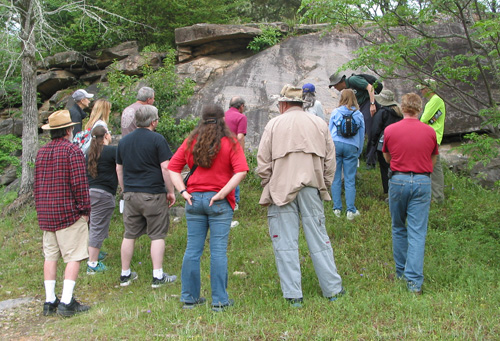
Standing in the Piedmont region of Georgia
Photo by Lori Carter
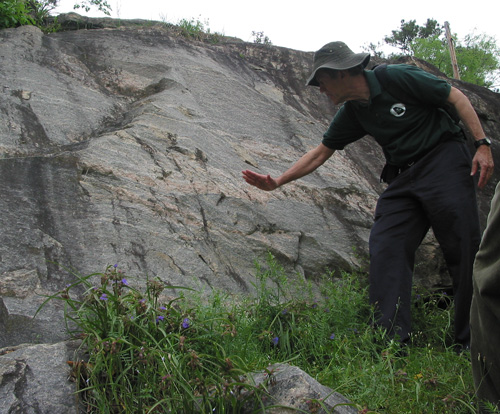
Dr. Witherspoon explained how the igneous feldspar pegmatite intruded into the surrounding rock
Photo by Lori Carter
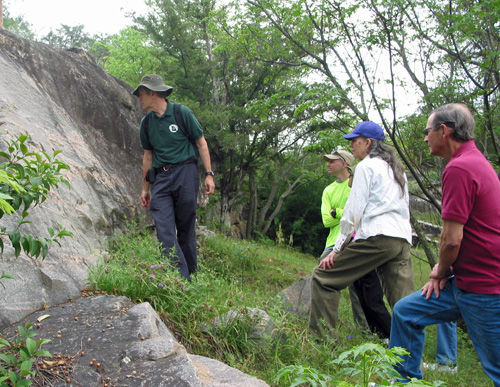
A great example of a pegmatite
Photo by Lori Carter
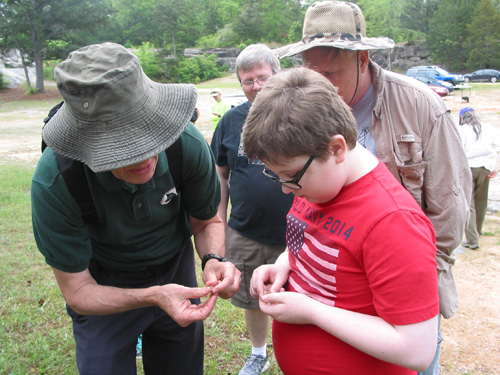
One junior noticed pieces of feldspar on the ground
Photo by Lori Carter
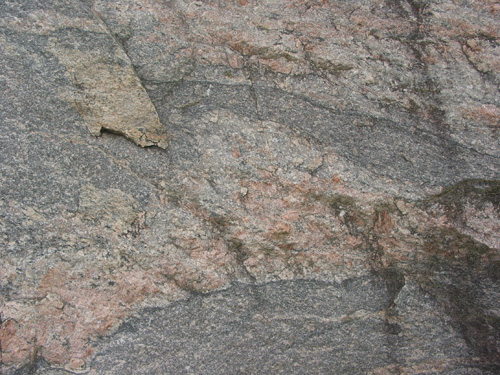
Close-up of the pegmatite
Photo by Lori Carter
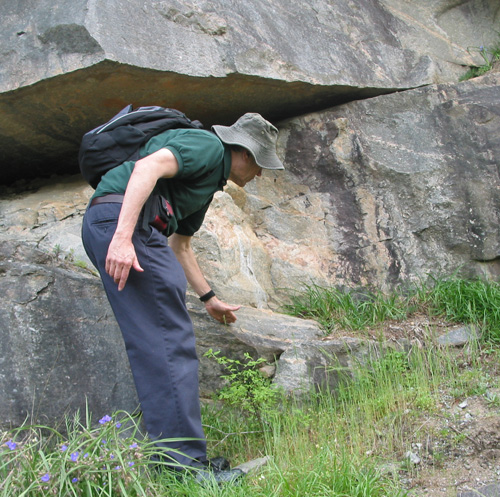
Dr. Witherspoon showed us another example of a pegmatite with multiple minerals
Photo by Lori Carter
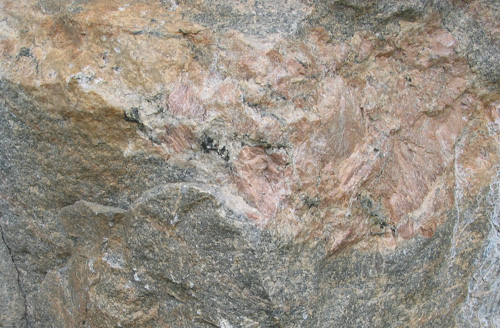
This pegmatite has feldspar (pink) and biotite mica (black)
Photo by Lori Carter
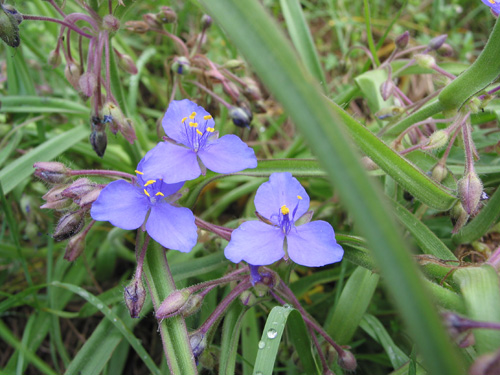
Some pretty flowers along the hike
Photo by Lori Carter
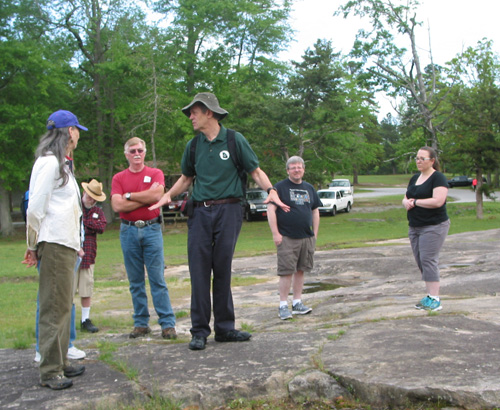
On top of some flat rock
Photo by Lori Carter
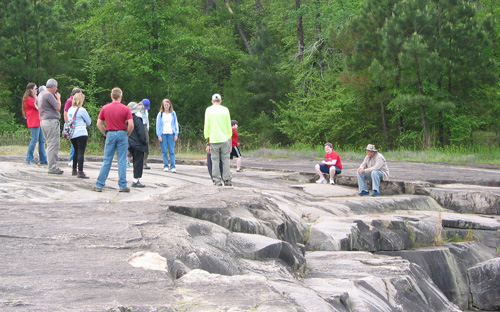
On top of the monadnock
Photo by Lori Carter
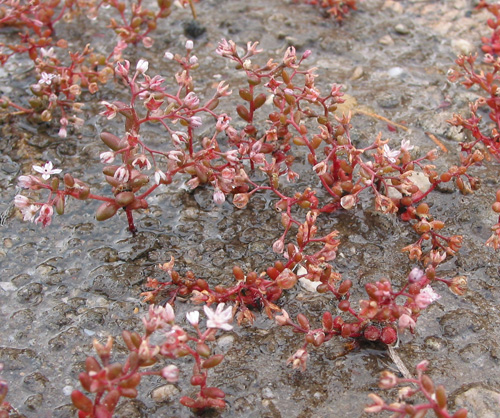
Endangered diamorpha plants in a vernal pool on the monadnock
Photo by Lori Carter
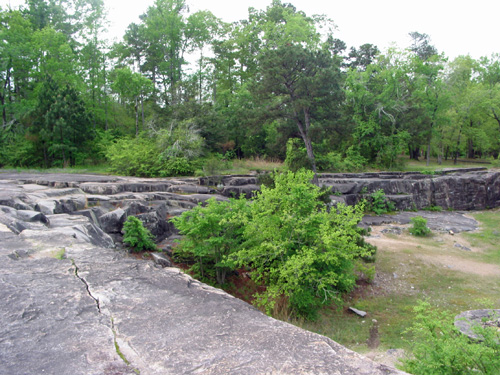
The monadnock from another angle
Photo by Lori Carter
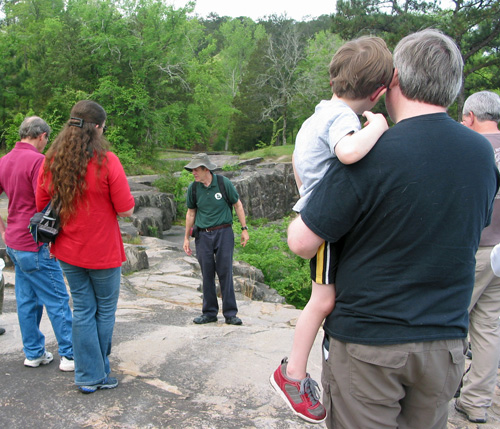
Dr. Witherspoon talking about the monadnock and showing us some of the features
Photo by Lori Carter
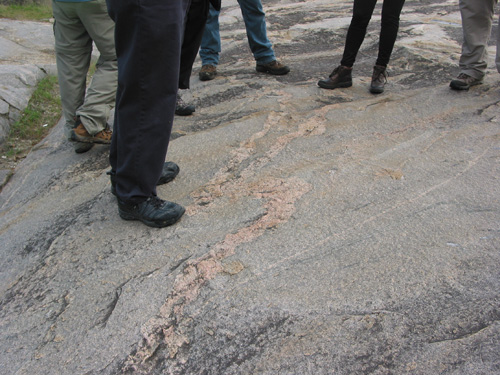
This pegmatite has been folded
Site 2: Sand Pit
Photo by Lori Carter
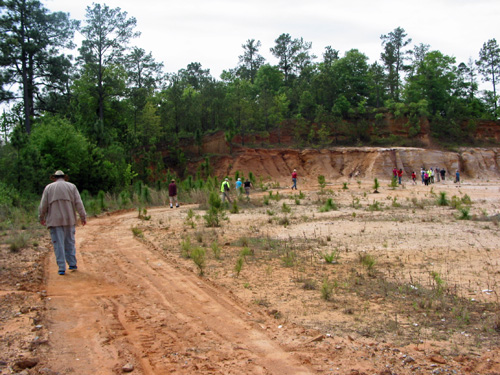
A short walk into the sand pit
Photo by Lori Carter
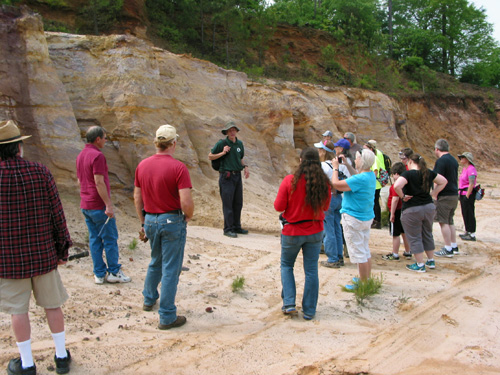
Standing in the Coastal Plain region of Georgia
Photo by Lori Carter
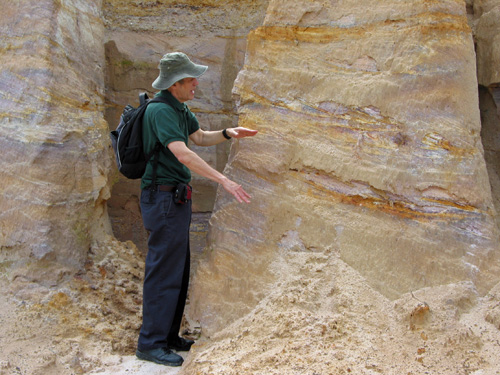
Dr. Witherspoon showed us the cross bedding that formed when water once flowed here and deposited the sediment
plus clay layers that were laid down too
Photo by Lori Carter
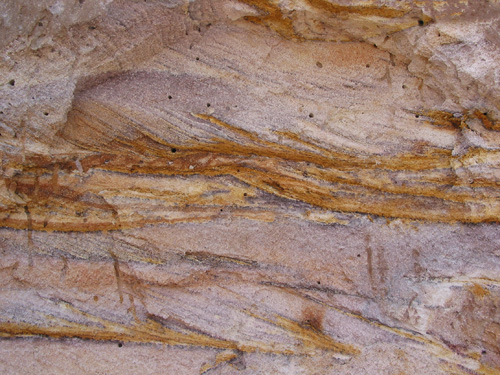
Close-up of the cross bedding (orange is the clay layers)
Photo by Lori Carter
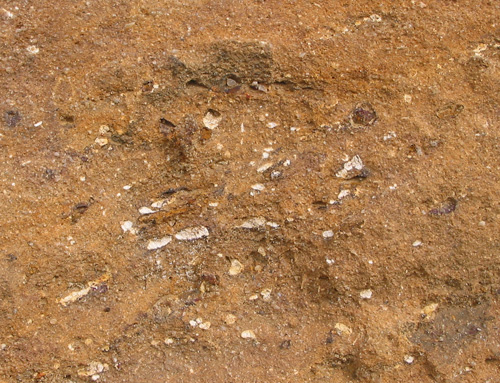
Trace fossils, probably feeding burrows
Photo by Lori Carter
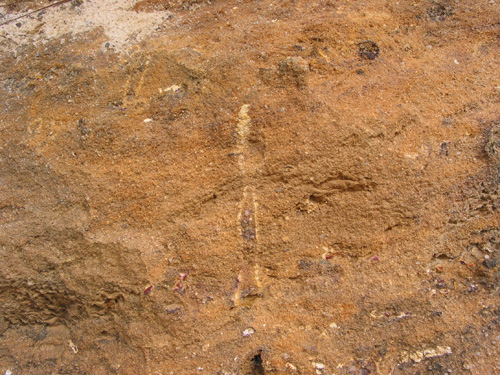
Vertical trace fossil
Photo by Lori Carter
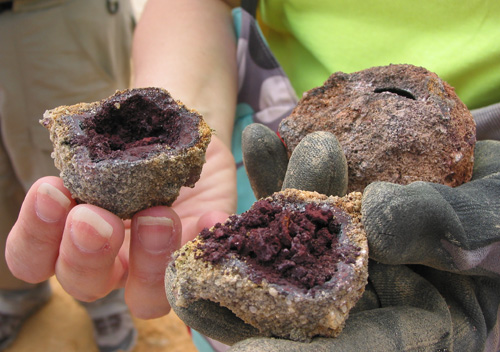
"Indian Paint Pots"
Photo by Lori Carter
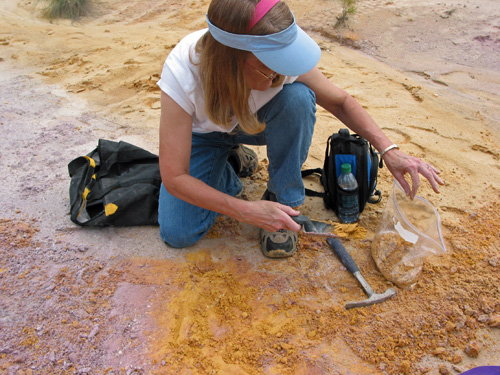
Mary Gurney found some great colors
Site 3: Providence Canyon
Photo by Lori Carter
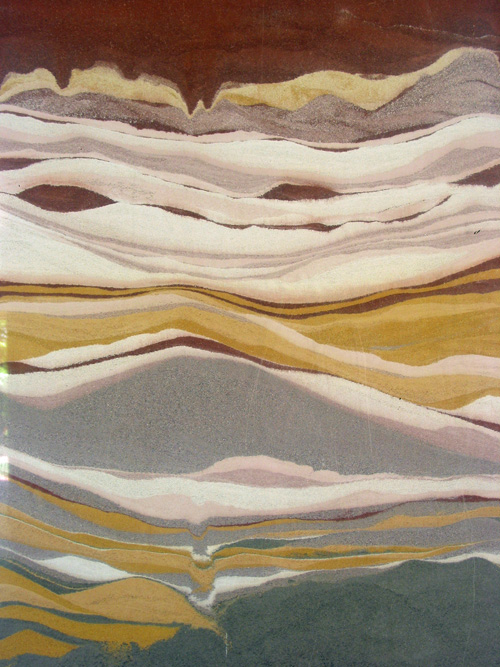
The visitor center has a display of the sand colors
Photo by Lori Carter
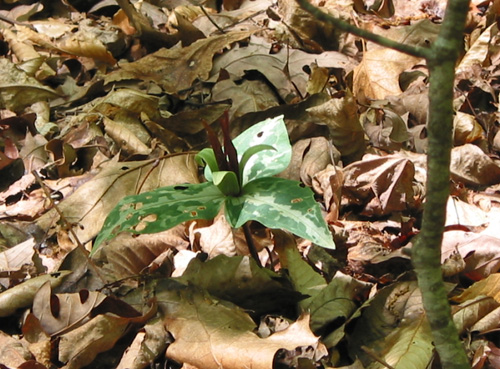
Trillium waiting for the sniff test
Photo by Lori Carter
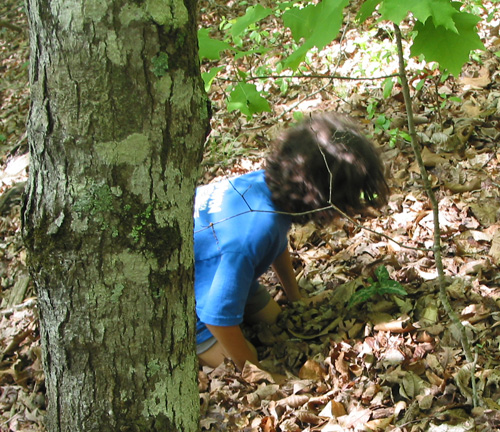
Sniff test being performed and declared "sweaty socks"
Photo by Lori Carter
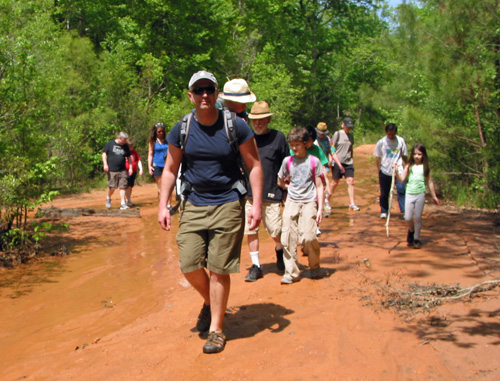
To the delight of juniors, part of our geology walk was along a very shallow creek
Photo by Lori Carter
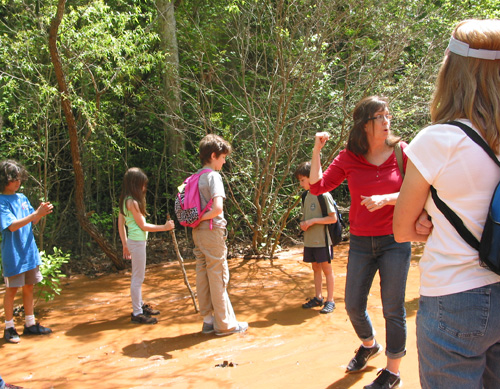
Dr. Edwards (red shirt) pointing out some mountain laurels
Photo by Lori Carter
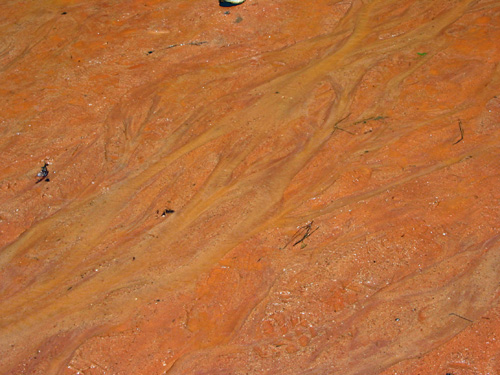
"Braid" pattern formed by the movement of water in the creek
Photo by Lori Carter
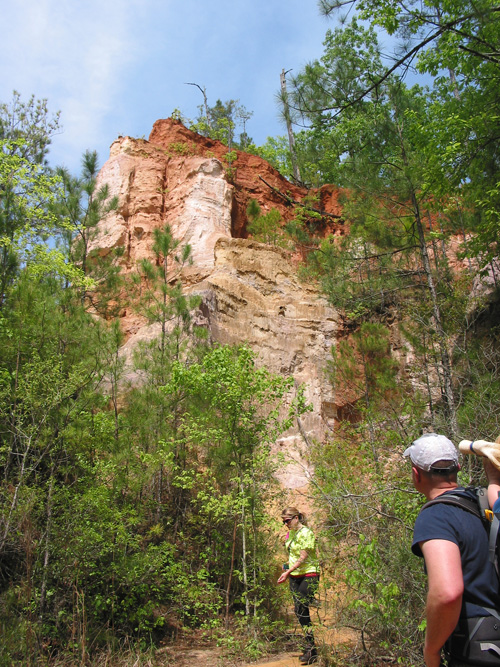
The first stunning view we encountered
Photo by Lori Carter
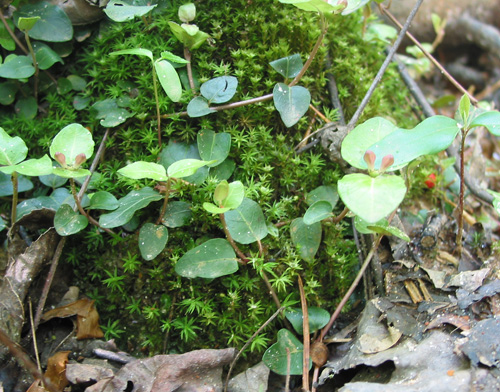
Some pretty moss on the trail
Photo by Lori Carter

One tree was covered with this lovely fungi
Photo by Lori Carter
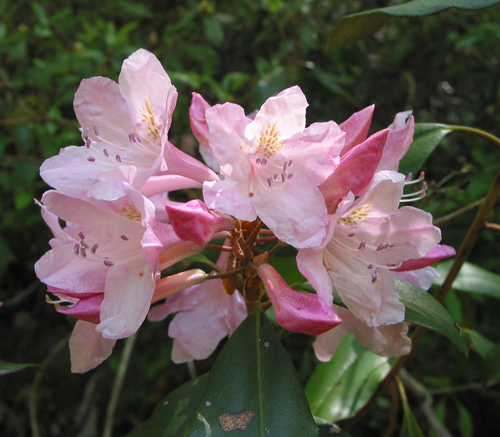
Mountain laurel
Photos by Lori Carter
Views from inside the canyon
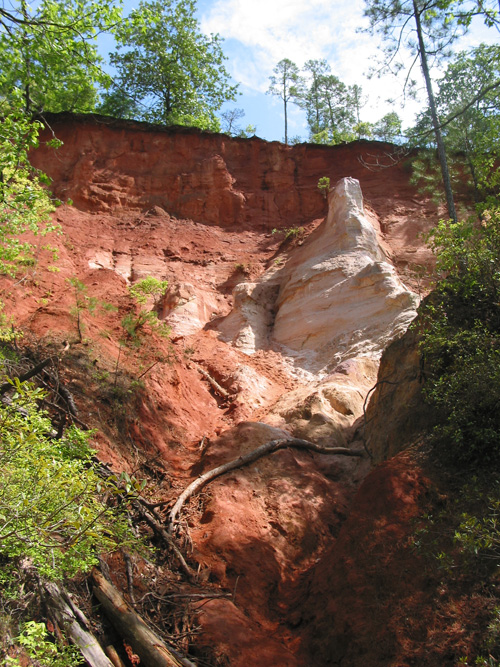
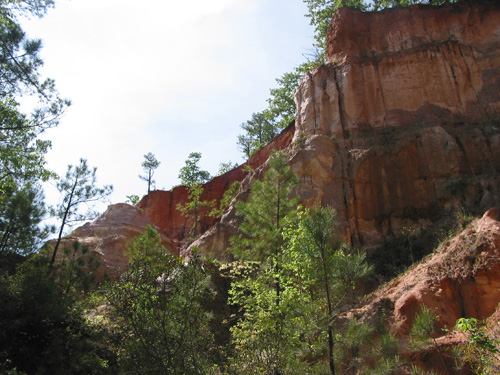
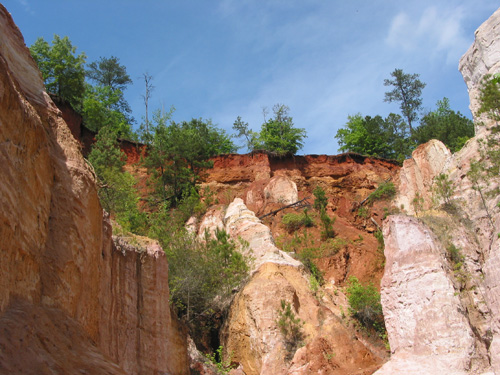
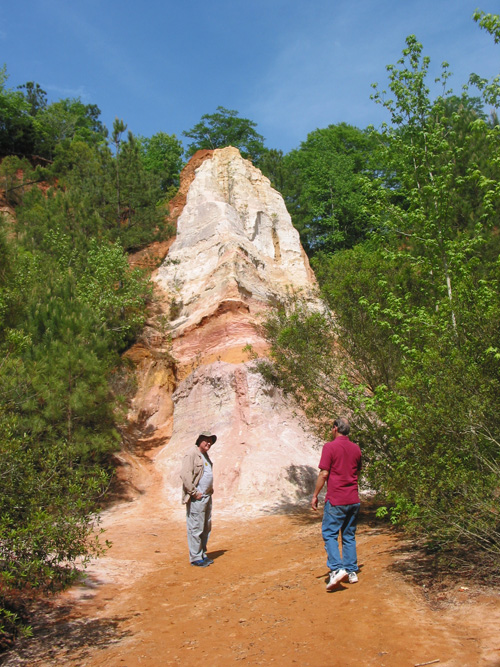
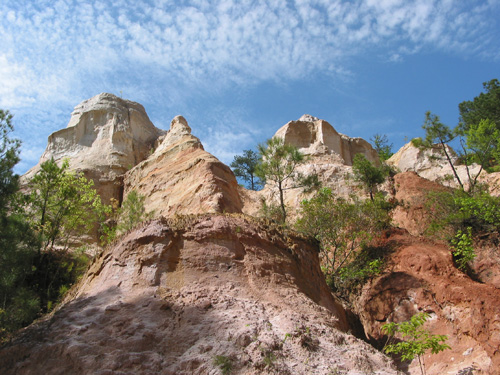
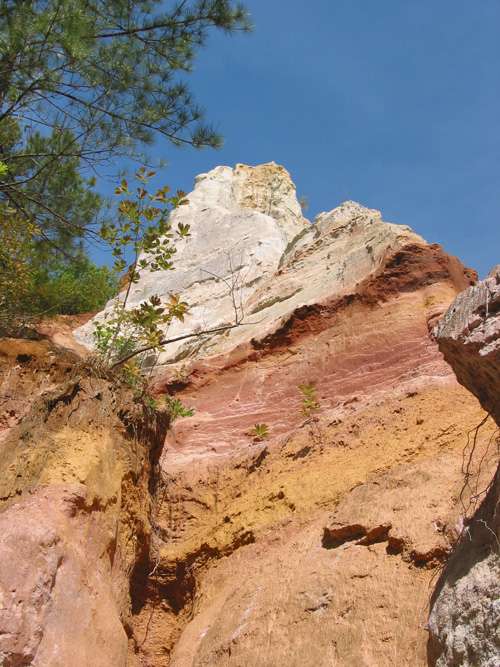
Views from inside the canyon
Photo by Lori Carter
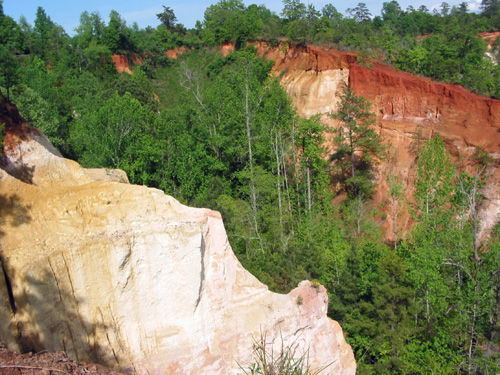
View from above the canyon
Photo by Lori Carter
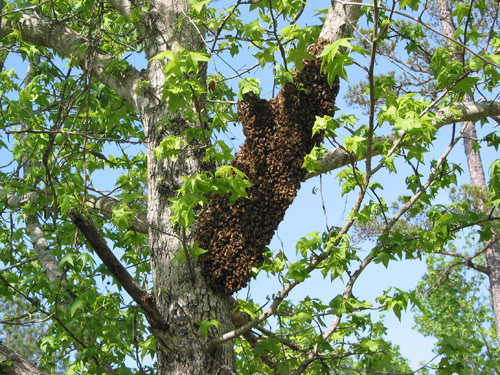
What's on that tree?
Photo by Lori Carter
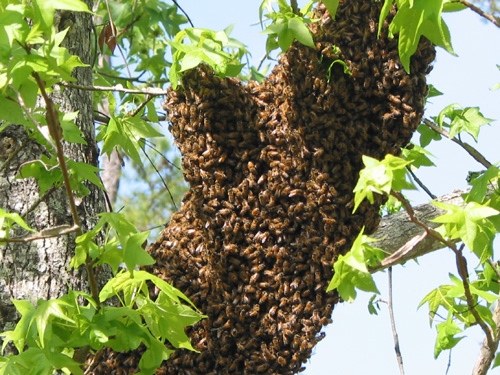
What's that buzzing sound?
Photo by Lori Carter
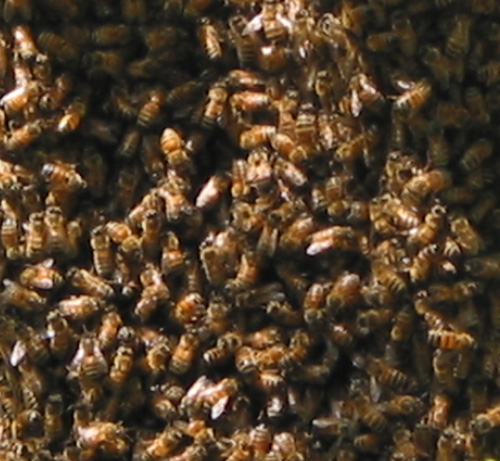
Run away!
Click below for field trip policies

Copyright © Georgia Mineral Society, Inc.
